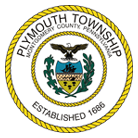Stormwater Management
The goals of stormwater management:
Reduce the discharge of pollutants
Protect water quality
Satisfy requirements of the Clean Water Act
Anything that goes into a storm sewer goes directly to streams, without being cleaned or filtered at a treatment plant. Residents can help! Be careful about using materials that could end up in the stormwater system and keep an eye on stormwater inlets. Items that can run off into storm drains and cause pollution include:
• Pet waste
• Fertilizers
• Sediment from construction sites
• Chemical, gas and oil spills
Dumping into the storm sewer system is illegal and dangerous! Call the Public Works Department at (610)277-4103 if you witness anyone dumping materials. This includes the dumping of waste water, illicit liquids or solids into inlets, streams or storm sewers. Call the Police Department at (610)279-1900 if you see illicit dumping after hours or on weekends.
Stormwater management is regulated by the Clean Water Act and by the Township’s National Pollutant Discharge Elimination System (NPDES) permits. The NPDES program includes local separate storm sewer systems called MS4s that serve populations with fewer than 100,000 residents. Plymouth received its permit on January 15, 2004. As an MS4, Plymouth Township is required to develop a stormwater management plan that involves the community through:
- Public education and outreach
- Public participation and involvement
- Illicit discharge detection and elimination
- Construction site runoff control
- Post-construction storm water management in new development and redevelopment
- Pollution prevention and good housekeeping for municipal operations and maintenance
More information about the MS4 program is available from the Pennsylvania DEP website and from the following EPA fact sheets:
Overview of the Phase II program
Small MS4 overview
Who’s covered
Urbanized areas
CONSTRUCTION PROFESSIONALS
Please note that a permit is required for the addition to, alteration of, replacement or relocation of any standpipe, water supply, sewer, drainage, drain leader, gas, soil, waste, vent or similar piping.
A construction site is a source of chemicals, debris and other pollutants that can be picked up by flowing stormwater. Not only does this pollute local water sources, it can also result in expensive repairs to vegetation, property, storm drains and gullies.
These pollution prevention measures can help:
- Minimize the amount of exposed soil.
- Protect existing trees, vegetation, streams, wetlands and woodlands with fencing.
- Properly install and maintain silt fences and inspect them after every storm.
- Sweep the construction site entrance regularly so that soil and debris does not reach storm drains. Landscape soon after the land is graded to stabilize the site.
For more information on construction activities see:
PAG-02 Stormwater Discharges Associated with Construction Activities
Storm water and the Construction Industry Poster
For more information about storm water management, education, and ways to prevent pollution, see:
StormwaterPA
U. S. Environmental Protection Agency
Center for Watershed Protection
Montgomery County Conservation District
EPA’s Stormwater Tool Box of Education Materials
Water Cycle Glossary of Terms
Ideas for Landscaping and Reducing Runoff Pollution:
Rain Barrels and Rain Gardens
Water Efficient Landscaping
Clean Water is Everybody’s Business
When it Rains it Drains Brochure




